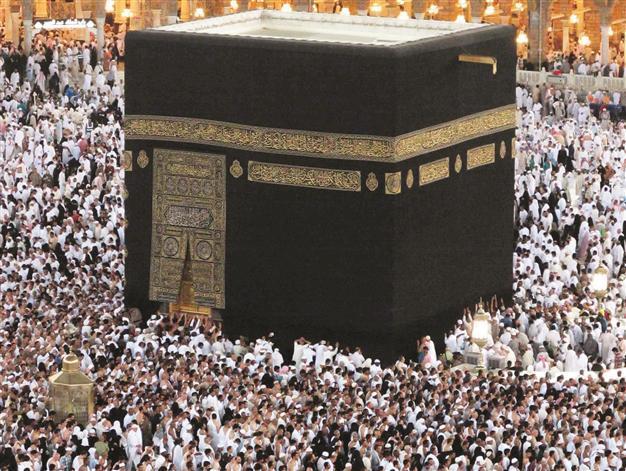The Ottomans and the city of Mecca
NIKI GAMM ISTANBUL - Hürriyet Daily News

Located about 45 miles from the coast,
Mecca was an important trade center for the
Arabian Peninsula. The person holding the post of sharif was responsible for law and order in the holy cities and for the safety of the pilgrims.
In 1517, the Ottoman Sultan Selim I turned his attention toward the Mamluks who ruled an area that extended from northern Syria to the Arabian Peninsula from their capital of Cairo. He had decisively defeated the Persian shah and had been irritated to find that the Mamluks had been supporting the Persians against him. But he justified his campaign on the grounds that the Mamluks were too weak to ward off the aggressive Portuguese who threatened the Arabian Peninsula with its holy cities as a result of their activity in the Indian Ocean and Red Sea. The sultan entered Cairo in January 1517 after a fierce battle in which the Ottomans prevailed. At that time he also took the title of caliph which had been the prerogative of the Mamluk sultan up until then.
Some months later Sultan Selim and his army proceeded to conquer Mecca and Medina, the holy cities, but he never fought a battle because the sharif (governor) of Mecca presented him with the keys to the cities. On August 29, 1517, Selim was officially proclaimed caliph by the sharif. The title of caliph originally meant successor, that is, the successor to the Prophet Muhammad. It became the title designating the highest post in Islam. For centuries it was held by the strongest political ruler.
An important trade center Located about 45 miles from the coast, the city of Mecca was an important trade center for the Arabian Peninsula. Under the Ottomans, the city of Mecca continued to be governed by the sharif. The person holding the post of sharif was responsible for law and order in the holy cities and for the safety of the pilgrims; however, his resources were far from meeting all of the needs of the city. That is where the caliph came in. The Ottoman sultans took the position of caliph very seriously and maintaining it became a matter of pride and prestige. When it was discovered during the reign of Sultan Süleyman the Magnificent (r. 1520-1566) that the foundations were insufficient to meet all of Mecca’s expenses, more such organizations were established to provide aid.
At the beginning, the Ottomans only cared that Mecca and the area around it were quiet and what was due in the way of taxes was collected and spent as it ought to be. But in the 17th century, that began to break down as Ottoman preoccupation with its European holdings took hold. Instead of the military being in charge, the empire appointed bureaucrats to take charge.
On top of everything, the Ottoman sultan felt responsible for any repairs that might be necessary for the Kaaba and other monuments. These were essential because of floods, earthquakes or fires. In 1626 heavy rains and flooding caused three of the four walls of the Kaaba to collapse. The following year the sanctuary was rebuilt and to help protect it in future, a golden rainspout was installed and a gutter was added.
Organizing the annual pilgrimage also fell to the Ottoman sultans and much, if not most of the preparations were carried out by the women in the harem. The emir al-hajj (commander of the hajj), usually a military man, was appointed to be in charge and he was responsible for ensuring that everything was ready to be loaded on camels, horses and mules for the journey. He would be entrusted with the gifts and money (gold coins usually) that would be sent to the sharif of Mecca.
Women in harem The women in the harem were responsible every year for sewing and embroidering the silk cloth (kiswa) that would cover the Kaaba. Traditionally its color was black and the embroidery on it was gold thread. The writing was, and still is, chosen from verses in the Quran. Once completed, it would be placed in a decorated carrying case and loaded on a camel that had been especially chosen for the honor of taking the cloth to Mecca.
Pilgrims traveling from İzmir, the European side of the empire and Uzbeks from Central Asia would join the pilgrimage in Istanbul. This great caravan would leave from Üsküdar with a heavy escort but not before a magnificent ceremony was held at Topkapı Palace. Another caravan, coming from the East, would join the one from Istanbul at Damascus.
Suraiya Faroqhi writes in “Pilgrims and Sultans” that at the end of the 16th century, 60 camels were set aside for pilgrims who were poor and of these 20 would carry food. Camels were also provided to carry water barrels just in case water couldn’t be found on the road. In addition, in the 17th century we learn that at least 349 camels were set aside for the use of influential people. This must have been a truly impressive sight.
history, Ottoman Empire, Turkey,

